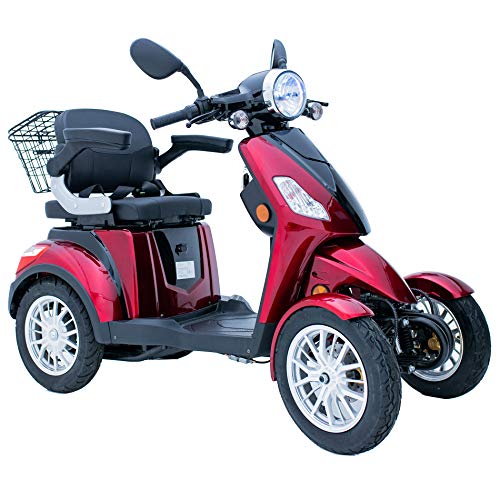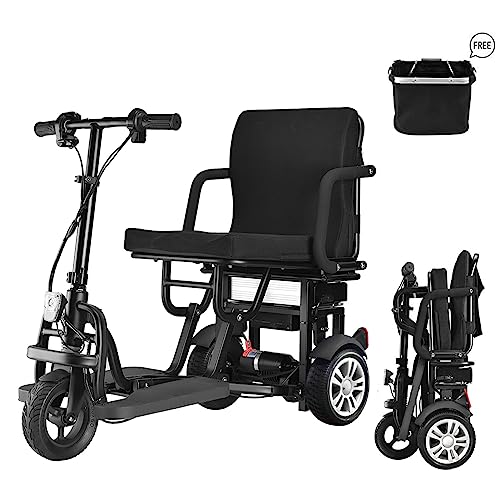20 Things You Should To Ask About Mobility Devices Prior To Purchasing…
페이지 정보
작성자 Jerrod 작성일 24-12-24 16:15 조회 5 댓글 0본문
 Fleet Management and Smart Mobility
Fleet Management and Smart MobilitySmart mobility offers alternative transportation options to private vehicles and encourages carpooling. It also helps to improve sustainability by reducing traffic and pollution.
These systems require high-speed connectivity between devices and roads, and centralized systems. They also require advanced algorithms and software to process information collected by sensors or other devices.
Safety
A variety of smart mobility solutions are developed to tackle a variety of urban challenges, including sustainability, air quality, and road security. These solutions can help to reduce congestion in traffic, carbon emissions, and facilitate access to transportation options for residents. They can also improve the management of fleets and provide users with more options for transportation.
The smart mobility concept is still in its infancy and there are some obstacles that need to be overcome before these solutions are fully implemented. This includes ensuring the security of smart infrastructures and devices, establishing user-friendly interfaces, and implementing secure measures for data security. It is also essential to comprehend the needs and preferences of different users to ensure that they are able to adopt.
Smart mobility's ability to integrate with existing infrastructure and systems is an important feature. Sensors can provide real-time data and improve the performance of systems by making them part of vehicles roads, transportation systems, and other components. These sensors track weather conditions, traffic, and vehicle health. They also can detect and report any issues with road infrastructure, such as potholes or bridges. These data can be used to improve routes, reduce delays, and minimize the impact on traveller.
Smart mobility also comes with the advantage of improving security for the fleet. Through advanced driver alerts and collision avoidance systems, these technology can help reduce accidents caused by human mistakes. This is crucial for business owners whose fleets are used to deliver goods and provide services.
In enabling a more efficient utilization of transportation infrastructure and vehicles, smart mobility solutions can reduce fuel consumption and CO2 emissions. They can also promote the use best folding 3 wheel electric mobility scooters mobility scooter for adults (visit the following internet site) vehicles, which can result in a decrease in pollution and cleaner air. In addition smart mobility could provide alternatives to private automobile ownership and encourage the use of public transportation.
As the number of smart devices continue to increase, there is the need for a comprehensive data protection framework that can ensure the privacy and security of the data they gather. This involves establishing clear guidelines on what data is taken, how it's used and who it's shared with. This involves implementing robust cyber security measures, constantly updating systems to fight new threats, aswell making sure that data is transparent in handling practices.
Efficiency
It is evident that the urban mobility eco-system is in dire need of an upgrade. Congestion, pollution and wasted time are just a few factors that adversely affect business and the quality of life.
Companies that offer solutions to the challenges of modern logistics and transportation are poised to take advantage of an ever-growing market. These solutions must also include intelligent technology to help solve major issues like the management of traffic and energy efficiency, as well as sustainability.
The concept behind smart mobility solutions is to make use of various technologies in cars and urban infrastructure to increase the efficiency of transportation and reduce emissions, accident rates and costs of ownership. These technologies generate a huge amount of data, which is why they need to be linked to each other and analysed in real-time.
A lot of the technologies utilized in transportation have built-in connectivity. These technologies include ride-share scooters, which can be unlocked via QR codes and apps and paid for autonomous vehicles, as well as smart traffic signals. These devices can also be linked to each other and centralized systems with the use of sensors, low-power wireless networks (LPWAN) and SIM cards for eSIM.
In the end, information can be shared in real-time and swift actions taken to alleviate issues like traffic congestion or accidents on the road. This is possible thanks to advanced machine learning algorithms and sensor data that analyzes data in order to identify patterns. These systems can also predict future problems and provide advice to drivers to avoid them.
Several cities have already implemented smart solutions to mobility to ease congestion. Copenhagen, for instance, utilizes intelligent traffic signs that prioritize cyclists at rush hour to cut down on commute time and encourage cycling. Singapore has also introduced automated busses that use a combination sensors and cameras to guide them along the designated routes. This helps optimize public transport.
The next phase of smart mobility will be based on advanced technology, including artificial intelligence and huge data sets. AI will enable vehicles to communicate and interact with each other, as well as the surrounding environment. This will decrease the need for human driver assistance while optimizing vehicle routes. It will also enable intelligent energy management, anticipating renewable energy generation and assessing potential risks of leaks and outages.
Sustainability
Traditionally, the transport industry has been plagued by inefficient air pollution and traffic flow. Smart mobility is an answer to these issues. It provides a wide range of benefits that increase the living conditions of people. For example, it allows individuals to travel via public transit instead of driving their own cars. It makes it easier to locate the most efficient route and reduces the amount of traffic for users.
 Furthermore smart mobility is also environmentally friendly and provides alternative energy sources that are sustainable to fossil fuels. These solutions include ride-hailing and micromobility. These solutions also allow users to utilize compact electric mobility scooter vehicles and integrate public transportation within the city. They also reduce the need for private vehicles as well as reducing CO2 emissions, and improving the air quality in cities.
Furthermore smart mobility is also environmentally friendly and provides alternative energy sources that are sustainable to fossil fuels. These solutions include ride-hailing and micromobility. These solutions also allow users to utilize compact electric mobility scooter vehicles and integrate public transportation within the city. They also reduce the need for private vehicles as well as reducing CO2 emissions, and improving the air quality in cities.However, the digital and physical infrastructure required to implement smart mobility devices can be complicated and expensive. It is vital to ensure that the infrastructure is secure and safe and is able to withstand attacks by hackers. Besides, the system must be able to meet user needs in real time. This requires a very high level of autonomy in decision-making that is difficult due to the complexity of the problem space.
A large number of stakeholders also take part in the creation of smart mobility solutions. Transportation agencies, city planners and engineers are among them. All of these stakeholders must be able to work together. This will enable the development of more sustainable and better solutions that are beneficial to the environment.
In contrast to other cyber-physical systems like gas pipelines and gas pipelines, the failure of smart sustainable mobility systems could have significant environmental, social and economic consequences. This is due to the necessity of matching demand and supply in real-time and the storage capabilities of the system (e.g. storage of energy), and the unique combination of resources that make up the system. In addition, the systems have to be able handle significant levels of complexity as well as a large variety of possible inputs. For this reason, they require a completely different approach that is driven by IS.
Integration
With the growing emphasis on safety and sustainability fleet management companies have to adopt technology to meet the new standards. Smart mobility improves integration efficiency, automation, and safety and also boosts performance.
Smart electric portable mobility scooter can include various technologies and includes everything that features connectivity. Ride-share scooters which can be accessible via an app are an example, as are autonomous vehicles and other modes of transportation that have come into existence in recent years. But the concept also applies to traffic lights, road sensors and other elements of a city's infrastructure.
Smart mobility is a strategy to build integrated urban transportation systems that improve the standard of living of people improve productivity, lower costs, and also have positive environmental effects. These are often lofty goals that require collaboration among city planners and engineers, as along with mobility and technology experts. The success of implementation will ultimately depend on the unique conditions in each city.
For instance the city might need to expand its network of charging stations for portable electric mobility scooters for adults vehicles, or might need to upgrade the bike paths and walkways to ensure safer walking and cycling. Additionally, it can benefit from intelligent traffic signal systems that adjust to changing conditions, and can reduce delays and congestion.
Local transportation companies play a crucial part in coordinating this initiative. They can develop apps that let users purchase tickets for public transport as well as car-sharing and bicycle rentals on one platform. This will make it simpler to travel around, and also encourage people to choose more sustainable transportation options.
MaaS platforms allow commuters to be more flexible in their travels through the city. This is contingent on what they require at any particular time. They can choose to take a car-sharing trip for a quick trip to the city for instance, or rent an e-bike for a longer trip. Both options can be combined into one app that outlines the entire route from door-to-door and makes it easy for users to switch between modes.
These kinds of integrated solutions are only the top of the iceberg when it comes to the implementation of smart mobility. In the near future, cities will have to connect their transportation networks, and make seamless connections between multimodal journeys. They will require data analytics and artificial intelligence to improve the flow of goods and people and will also need to support the development of vehicles that can communicate with their surroundings.
- 이전글 7 Things About Peritoneal Mesothelioma Not Caused By Asbestos You'll Kick Yourself For Not Knowing
- 다음글 5 Killer Quora Answers To 2 Seater Chesterfield Sofa Leather
댓글목록 0
등록된 댓글이 없습니다.






